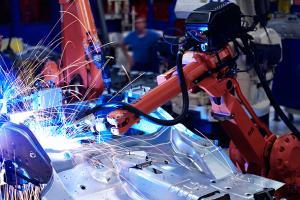Welding is a fabrication or sculptural process that joins materials, usually metals or thermoplastics, by causing fusion, which is distinct from lower temperature metal-joining techniques such as brazing and soldering, which do not melt the base metal.
In addition to melting the base metal, a filler material is often added to the joint to form a pool of molten material (the weld pool) that cools to form a joint that can be as strong as the base material.







